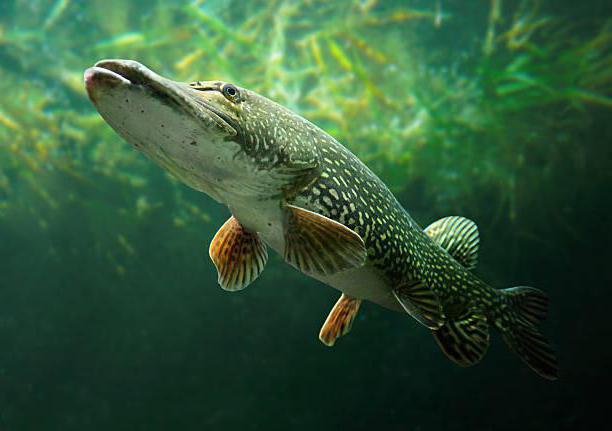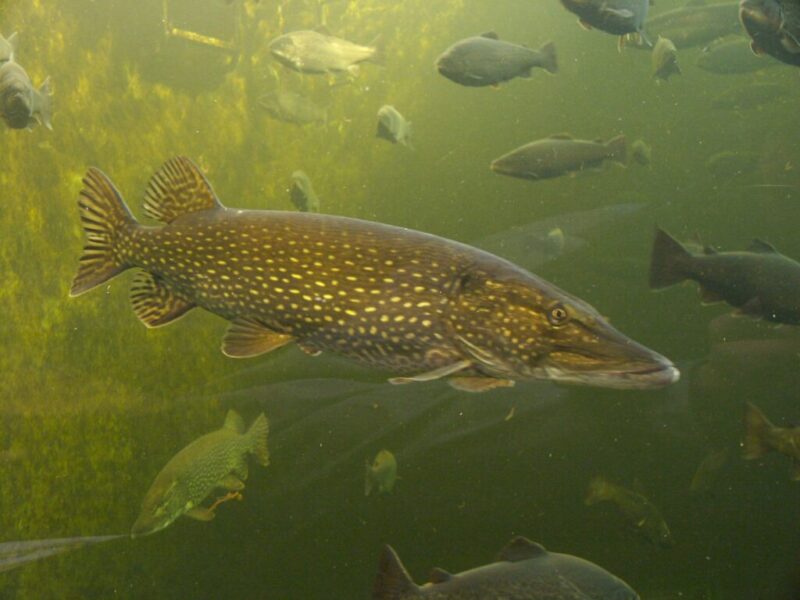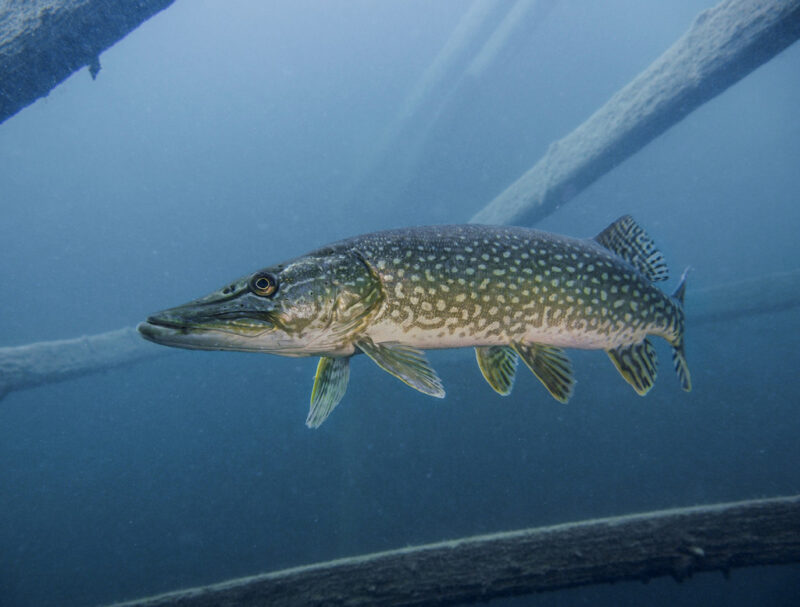Characteristics
The pike is a species of predatory fish from the pike genus, which is widespread in Europe, Asia and North America. It usually reaches a length between 40 and 55 cm. Larger specimens also often occur in nature. The longest recorded specimen measured around 150 cm, and the heaviest was 28.4 kg.
| Species | A fish |
| Habitat | Lake, Wetland, Streams, Riverside, Rivers, Pond |
| Size | up to 150 cm |
| Weight | up to 28 kg |
Description
The body of the pike is elongated and cylindrical, slightly flattened laterally. The head is long, characteristically flat and somewhat similar to a duck’s beak. The muzzle is large and wide to the eyes, and the lower jaw is longer than the upper. In the mouth, the pike has strong and sharp teeth, which are curved backwards and are larger in the lower jaw than in the upper. The back is usually olive green, with a brown or gray reflection. The flanks are lighter, dirty yellow to gray and the belly is dirty white. The fins are blotchy, reddish yellow to brownish red in color. The dorsal fin is moved far back and is located above the precaudal fin. Pike is spread almost all over Europe, except southern Spain and southern Italy. In Slovenia, this species is most common in the Danube basin, where it mainly inhabits stagnant and slow-flowing waters, but it can also stay in the trout belt, as it tolerates cold water well. It usually lingers among aquatic vegetation, where it lies in wait for its prey in ambush. It is often found among grass, underwater submerged trees, along island shores, among roots or in the shade of trees. Its main prey is small fish, but it also feeds on smaller aquatic mammals, amphibians and waterfowl, and it often preys on smaller pikes as well. The pike is a carnivorous fish, which occurs at the age of about 5 weeks, when there is a shortage of fish in the ratio of 2 pike to 1 prey in the natural environment. In Slovenia, pike inhabits all watercourses, but it is not widespread in the rivers of the Soča basin, the Rižana, the Reka and Lake Bohinj. In Slovenia, pike is protected by a conservation period that lasts from 1 February to 30 April and a minimum catch size of 55 cm.
Source: lifehabitats.com





